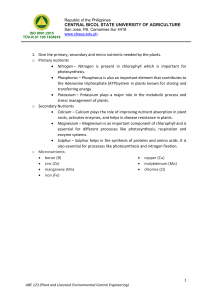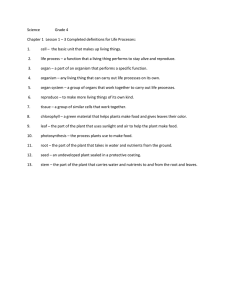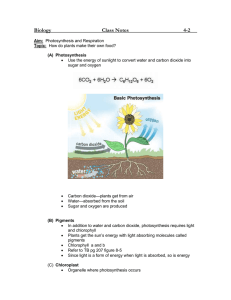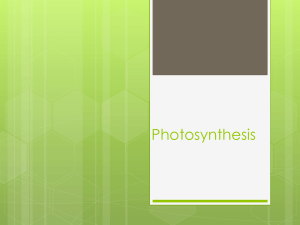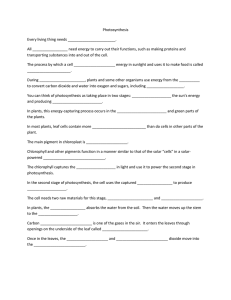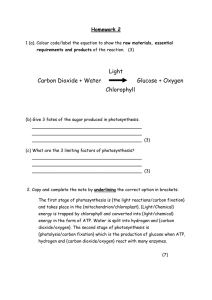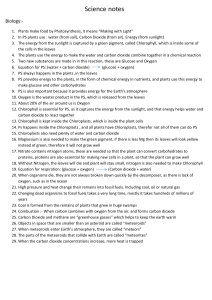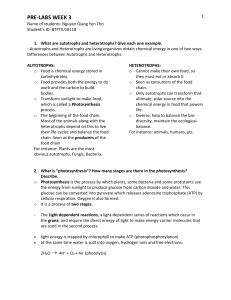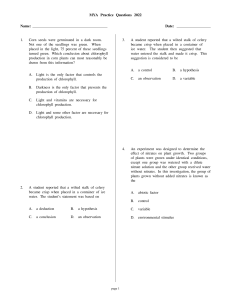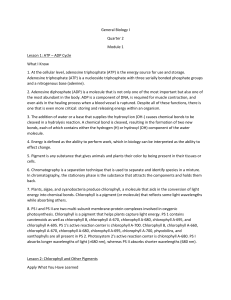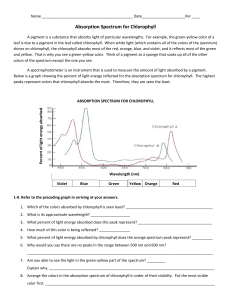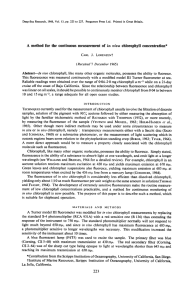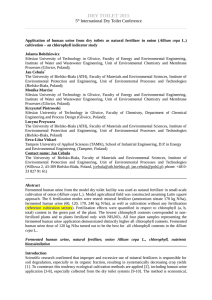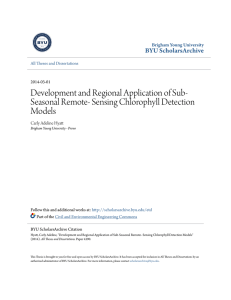Photosynthesis
advertisement
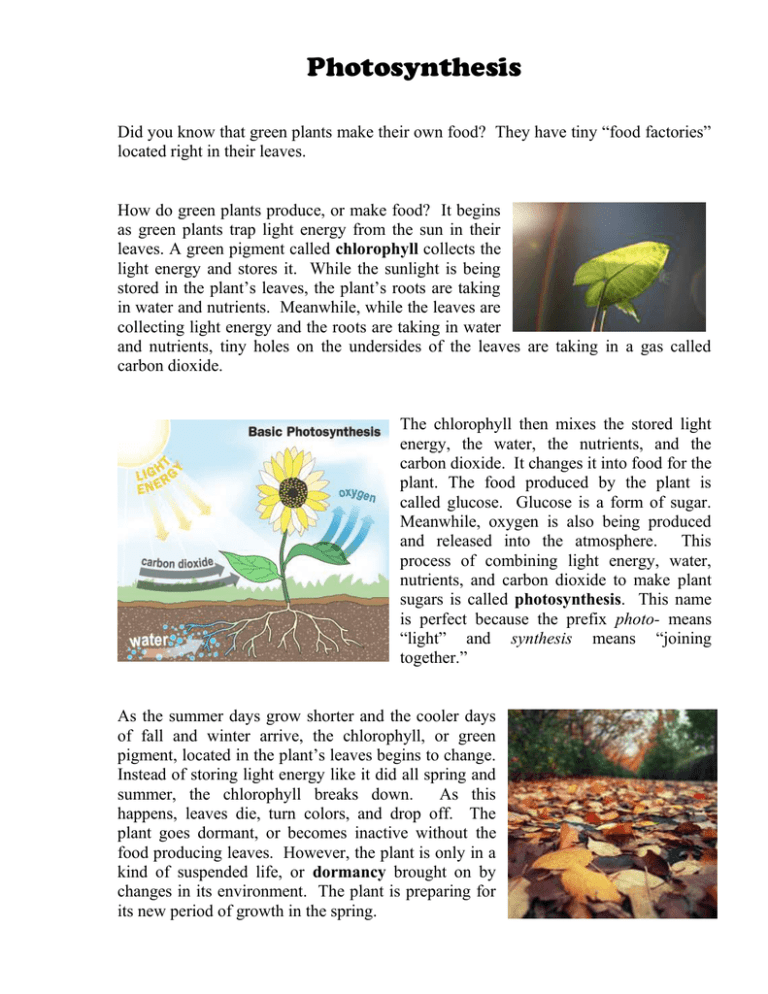
Photosynthesis Did you know that green plants make their own food? They have tiny “food factories” located right in their leaves. How do green plants produce, or make food? It begins as green plants trap light energy from the sun in their leaves. A green pigment called chlorophyll collects the light energy and stores it. While the sunlight is being stored in the plant’s leaves, the plant’s roots are taking in water and nutrients. Meanwhile, while the leaves are collecting light energy and the roots are taking in water and nutrients, tiny holes on the undersides of the leaves are taking in a gas called carbon dioxide. The chlorophyll then mixes the stored light energy, the water, the nutrients, and the carbon dioxide. It changes it into food for the plant. The food produced by the plant is called glucose. Glucose is a form of sugar. Meanwhile, oxygen is also being produced and released into the atmosphere. This process of combining light energy, water, nutrients, and carbon dioxide to make plant sugars is called photosynthesis. This name is perfect because the prefix photo- means “light” and synthesis means “joining together.” As the summer days grow shorter and the cooler days of fall and winter arrive, the chlorophyll, or green pigment, located in the plant’s leaves begins to change. Instead of storing light energy like it did all spring and summer, the chlorophyll breaks down. As this happens, leaves die, turn colors, and drop off. The plant goes dormant, or becomes inactive without the food producing leaves. However, the plant is only in a kind of suspended life, or dormancy brought on by changes in its environment. The plant is preparing for its new period of growth in the spring.

